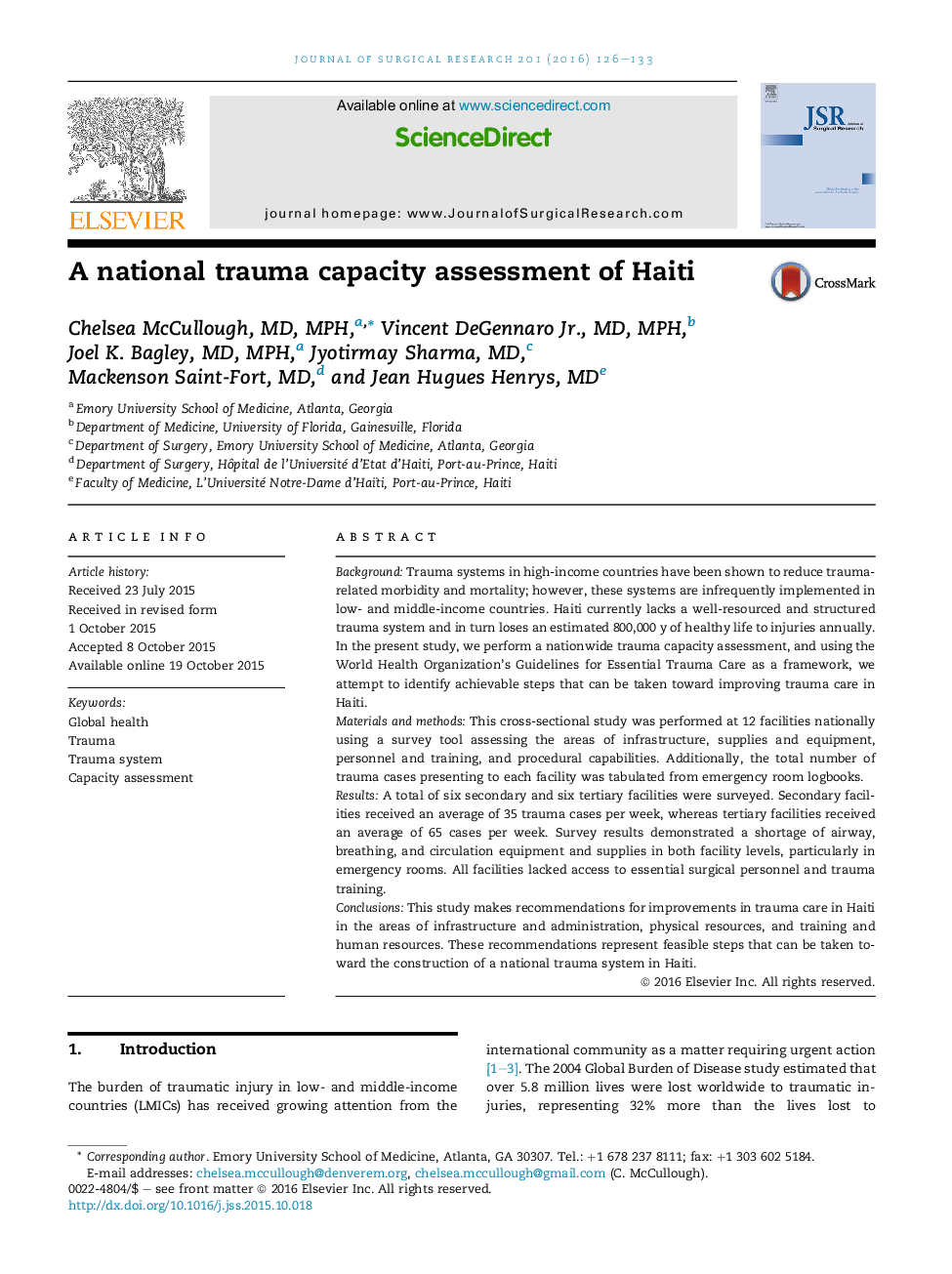| Article ID | Journal | Published Year | Pages | File Type |
|---|---|---|---|---|
| 6253290 | Journal of Surgical Research | 2016 | 8 Pages |
BackgroundTrauma systems in high-income countries have been shown to reduce trauma-related morbidity and mortality; however, these systems are infrequently implemented in low- and middle-income countries. Haiti currently lacks a well-resourced and structured trauma system and in turn loses an estimated 800,000Â y of healthy life to injuries annually. In the present study, we perform a nationwide trauma capacity assessment, and using the World Health Organization's Guidelines for Essential Trauma Care as a framework, we attempt to identify achievable steps that can be taken toward improving trauma care in Haiti.Materials and methodsThis cross-sectional study was performed at 12 facilities nationally using a survey tool assessing the areas of infrastructure, supplies and equipment, personnel and training, and procedural capabilities. Additionally, the total number of trauma cases presenting to each facility was tabulated from emergency room logbooks.ResultsA total of six secondary and six tertiary facilities were surveyed. Secondary facilities received an average of 35 trauma cases per week, whereas tertiary facilities received an average of 65 cases per week. Survey results demonstrated a shortage of airway, breathing, and circulation equipment and supplies in both facility levels, particularly in emergency rooms. All facilities lacked access to essential surgical personnel and trauma training.ConclusionsThis study makes recommendations for improvements in trauma care in Haiti in the areas of infrastructure and administration, physical resources, and training and human resources. These recommendations represent feasible steps that can be taken toward the construction of a national trauma system in Haiti.
